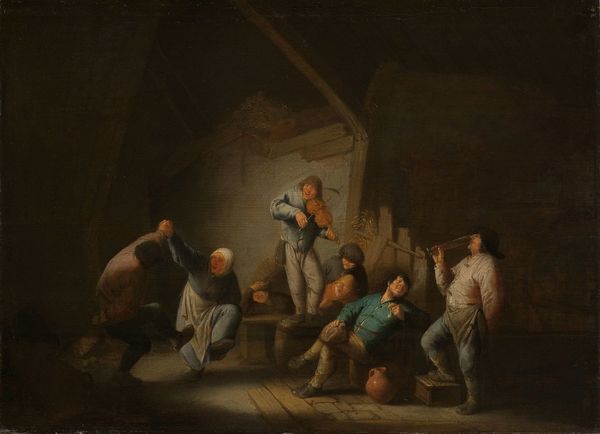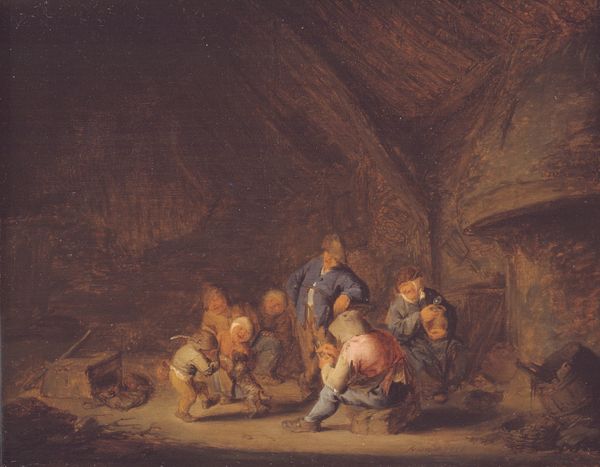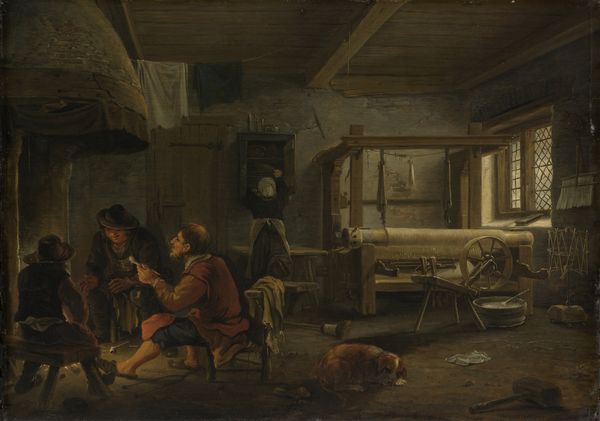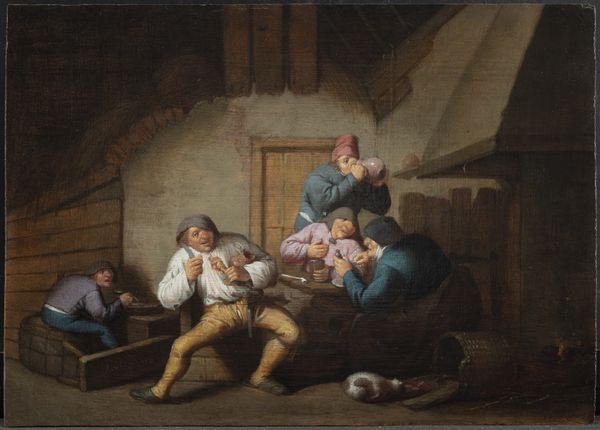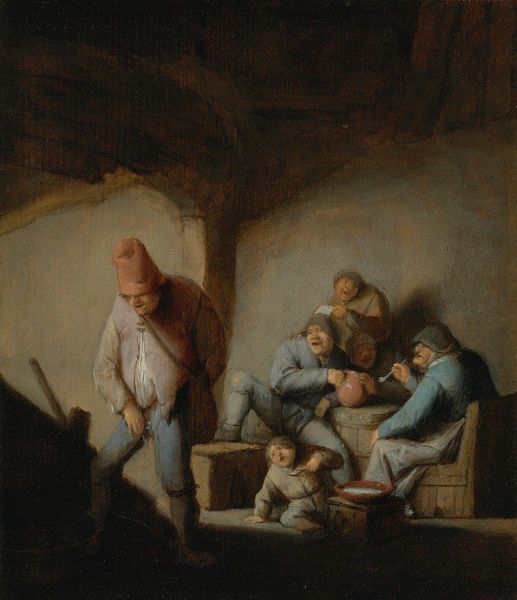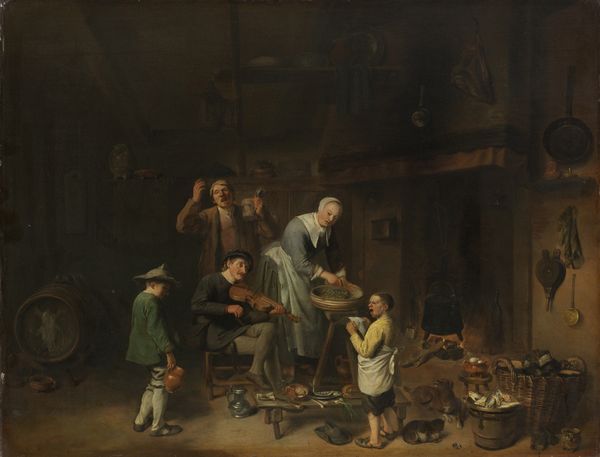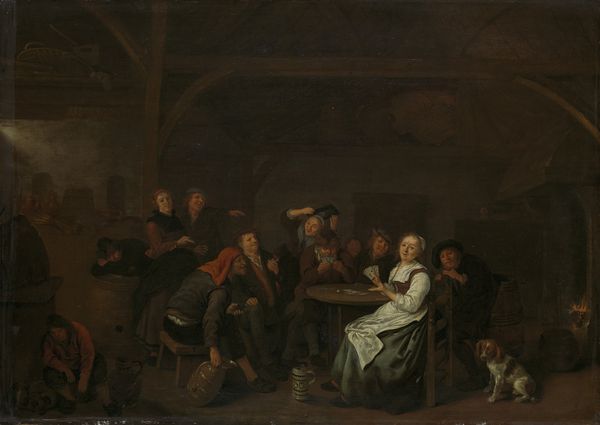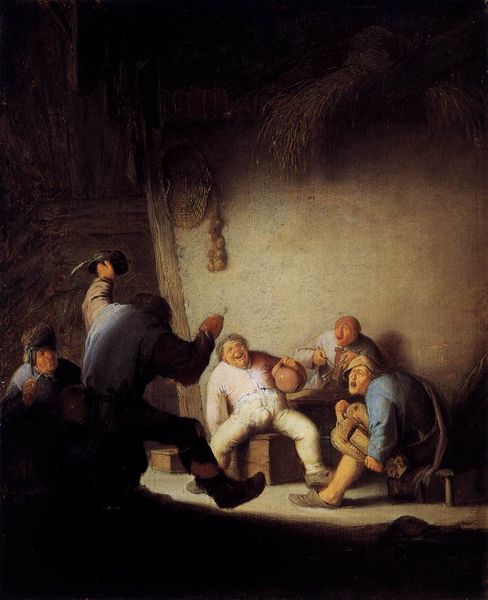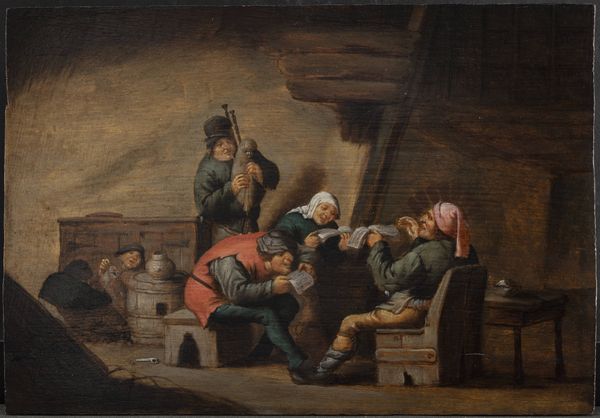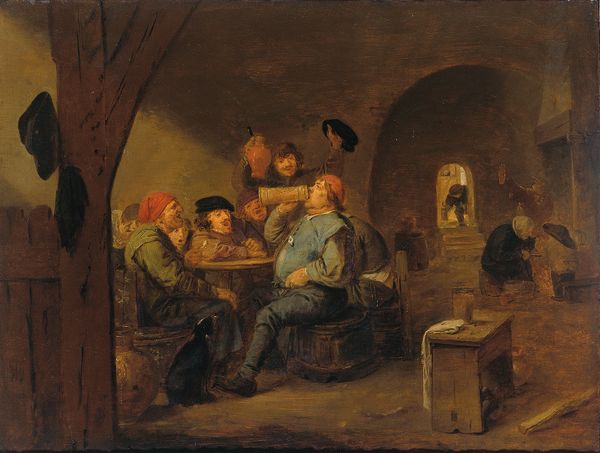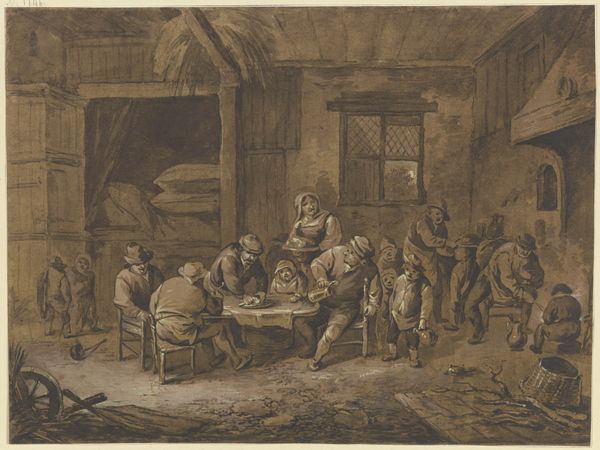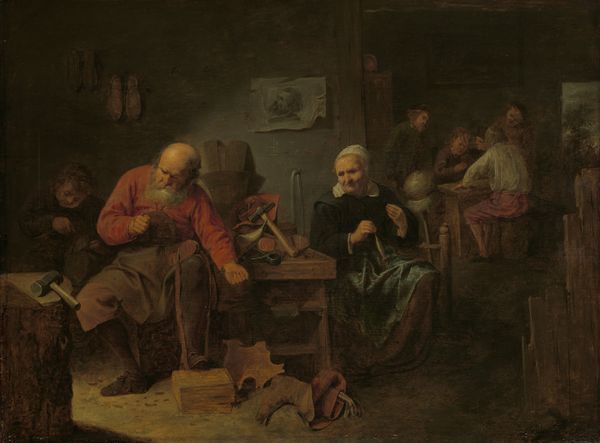
Dimensions: 31.5 cm (height) x 43.5 cm (width) (Netto)
Curator: Welcome. We're looking at "Making Merry in a Farm Cottage," a genre painting rendered in oil on panel sometime in the 16th century, attributed to Adriaen van Ostade. It's currently held at the SMK, the Statens Museum for Kunst. Editor: The first impression I get is one of rowdy chaos, albeit a contained chaos. There's an undeniable energy, with its central figure almost leaping out of the frame. The composition feels… unstable. Curator: Unstable is interesting. Van Ostade certainly uses diagonal lines, the slanting roof and ladder in particular, to disrupt any sense of classical harmony. The earthy tones reinforce a certain rusticity, fitting for a scene of peasant life. It epitomizes Dutch Golden Age painting with its detailed naturalism. Editor: Right, but what's being naturalized? Ostade invites us to witness the 'natural' merriment of the lower classes. This aestheticization risks glorifying what might, for many at the time, have been the only escape from incredibly difficult circumstances. Where are the women situated within this 'merry' scene? I notice only two – one, collapsed under a table; another relegated to a dark corner. Their perspectives, quite literally, are marginalized within Ostade's pictorial construction. Curator: Those are valid observations. I read the positioning of those figures, and indeed of the falling, or dancing, man in the centre, as key to the painting’s thematic tension. Are these characters expressions of pure liberation, or figures hinting at the disorder of the social and economic underclass? Look at the texture: Van Ostade layers the paint, building up the forms and giving a real sense of depth. Editor: Agreed. Van Ostade uses shadow strategically to direct the eye, while also obscuring detail, furthering that instability. We're left to fill in the gaps and project our own readings, inevitably shaped by our positionality and perhaps our nostalgia. But even those gaps can feel rather exclusionary. How does a celebration of supposedly carefree rurality operate for someone systemically denied freedom and care? Curator: It's true that such paintings raise ethical considerations about representation and artistic agency. What initially seems a simple snapshot into a cotttage reveals greater structural and individual imbalance upon a careful, contextual reading. Editor: It certainly forces me to reconsider how seemingly innocent or "natural" imagery can participate in, or perhaps actively distract us from the complex realities of labor and social life. Thank you. Curator: Indeed, a useful reminder to bring a critical gaze to all art, new or old. Thank you.
Comments
No comments
Be the first to comment and join the conversation on the ultimate creative platform.

